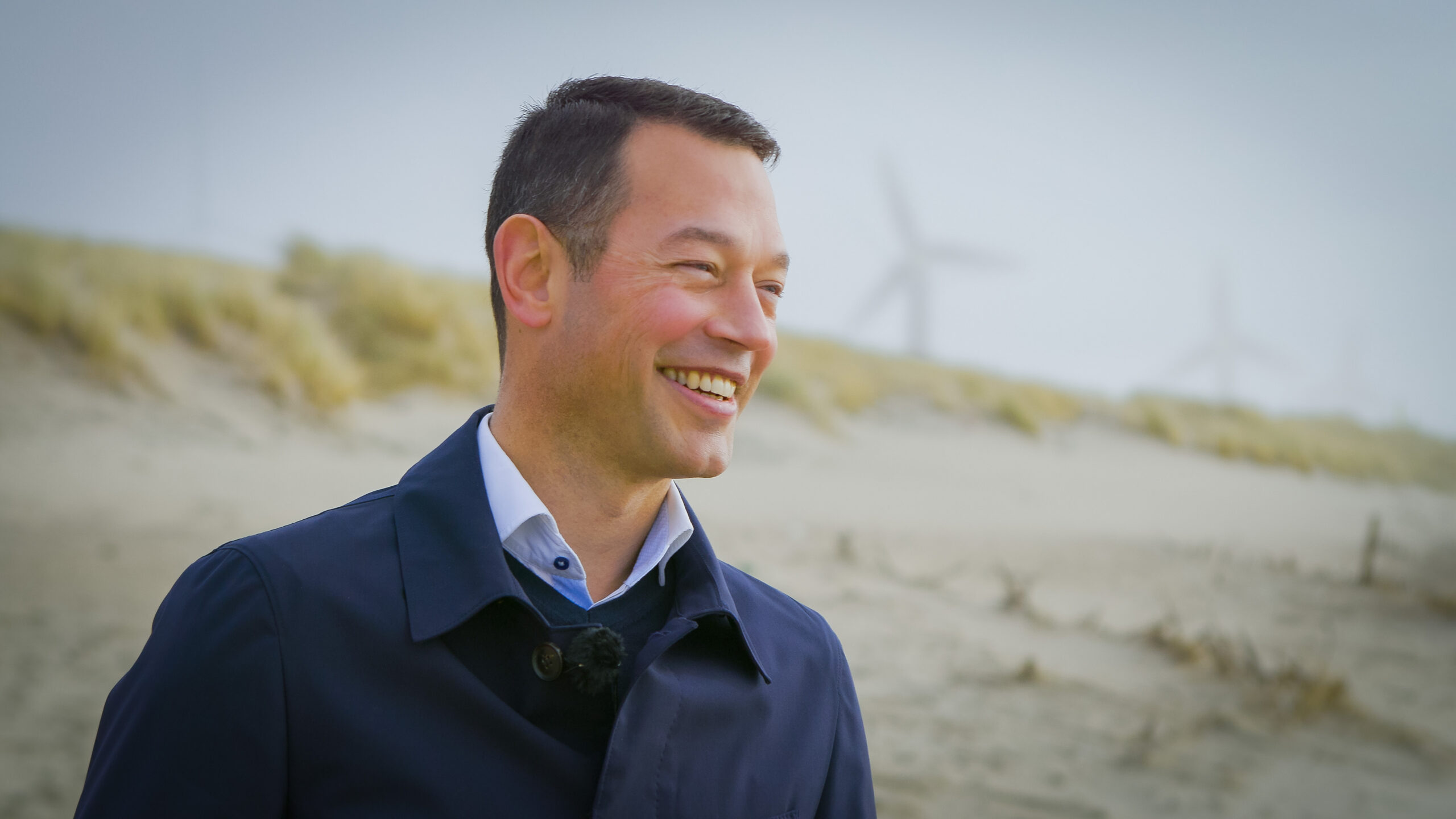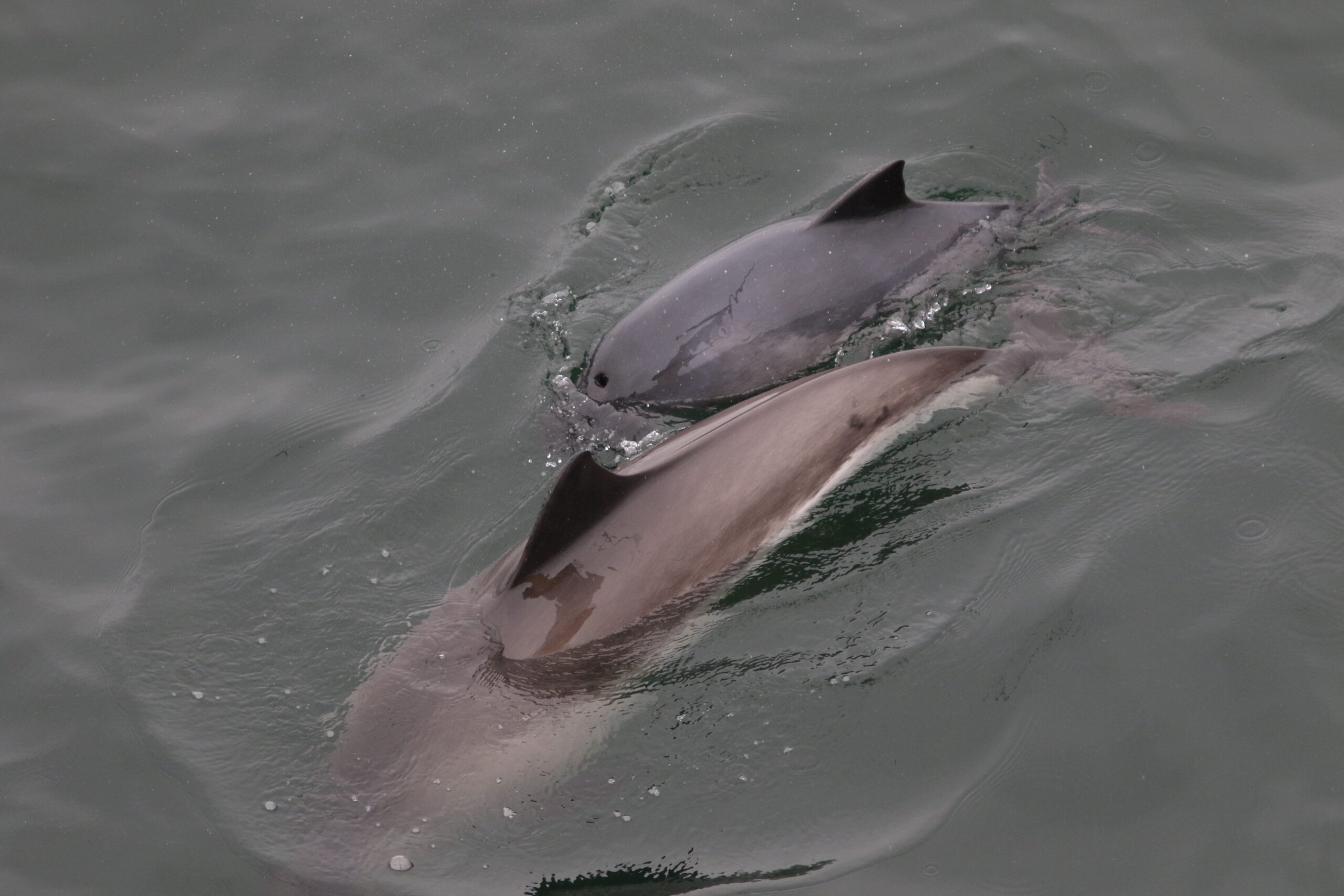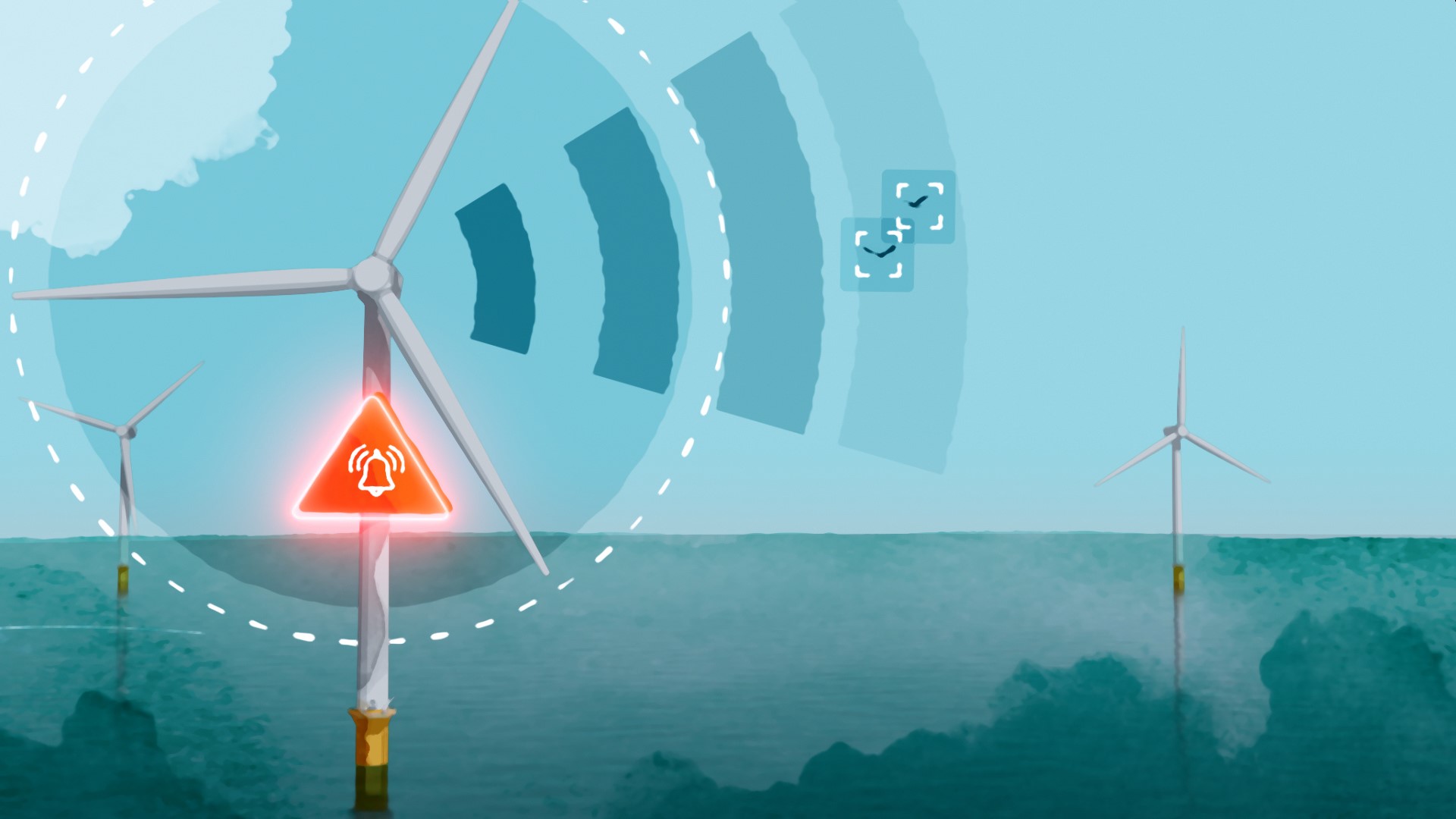Tjalling de Bruin on Energy Port IJmond: “In the interest of energy security, transition, and ambition”

Tuesday 18 February 2025
One of the parties with a vested interest in the establishment of the Energy Port IJmond is Ecowende, a wind farm developer for an ecological wind farm about 53 kilometers off the Dutch coast, near IJmuiden. Tjalling de Bruin, CEO of Ecowende, shares his thoughts: “It is in the interest of energy security, transition, and ambition that the Energy Port is established.”
Ecowende, a partnership between Shell, Chubu, and Eneco, aims to become the most ecological wind farm in the world, with an operational capacity of about 760 megawatts, which by 2026 will provide approximately three percent of the current Dutch electricity demand in a sustainable way.
Construction has already begun. The vessels that transport materials still travel to the ports of Rotterdam and Eemshaven, a considerable distance from the Hollandse Kust West wind farm, a point De Bruin also emphasises. “The closer we can get to the installation harbour for construction, assembly, and maintenance of the wind farm, the more sustainable it will be.”

Photo: Tjalling de Bruin, CEO Ecowende
De Bruin also highlights the importance of the Energy Port IJmond. “If the Dutch government wants to achieve the massive goal of 21 gigawatts of offshore wind energy by 2032, this needs to be facilitated. It is in the interest of energy security, transition, and ambition that the Energy Port is established. Not only for the Netherlands but also for neighbouring countries that wish to make use of it.”
Taller wind turbines
To generate more power at lower costs, wind turbines are becoming taller, and installation vessels are getting much bigger. The first land-based turbines were about 70 meters tall, while today’s offshore turbines stand at 230 meters. In China, even larger turbines are being built, reaching heights of 260 meters, with plans for turbines between 280 and 300 meters. The bigger, the better when it comes to lowering costs and increasing electricity production from wind turbines.
“Because wind turbines are growing ever larger, new demands are placed on harbour capacity,” De Bruin continues. “The components are massive. A nacelle – the generation house at the top of the wind turbine – weighs, for example, 700 tons. Current European installation harbours cannot sufficiently handle the construction, assembly, and maintenance of new offshore wind parks. The Energy Port will help address this capacity shortage.”
Shortage of staff
In addition to capacity problems for the construction and maintenance of wind farms, shortage of staff also pose a challenge, according to De Bruin. “As employers in the technical sector, we are all fishing from the same pool to find suitable staff. This will only increase in the coming years.”
De Bruin notes that more technically skilled people are needed to realise the roll-out of offshore wind energy in the Netherlands and achieve the ambition of a sustainable energy supply. “That’s why Ecowende is working with partners to visit lower, middle, and vocational schools to raise awareness and spark interest in nature and technology from a young age.”
In harmony with nature
Another condition – and perhaps the most important – for Ecowende to achieve its ambition of a sustainable energy supply is to make a positive contribution to biodiversity. Ecology is therefore leading in the design and construction of the wind farm, with as little impact as possible on birds, bats, and marine life. Ecowende aims to build the most ecological wind farm in the world.
A wind farm "in harmony with nature," but is that possible? According to Ecowende’s CEO, it is. “There will be more and more offshore wind parks to make the energy transition succeed. We better make sure these wind parks are built as ecological as possible.” Ecowende and its partners are working together with organisations such as the port of IJmuiden, TenneT, Rijkswaterstaat, and the municipality of Velsen.

Harbour porpoises in the North Sea. Photo: Waardenburg Ecology.
Eco-innovations
How will Ecowende build the most ecological wind farm in the world? De Bruin explains: “By applying eco-innovations, such as vibrating the foundation piles of the wind turbines into the seabed instead of piling. This significantly reduces noise and the disruption to marine life. The harbor porpoise, in particular, is sensitive to noise disturbance, which can even lead to behavioural changes. For 75 percent of the turbines, we are using a higher hub height, which raises the tip height by 10 meters, thereby reducing the chance of (fatal) collisions with birds like the greater black-backed gull.”
Some turbines will be equipped with a bird deterrent system using sound to keep birds away, and location-specific shutdowns will be applied for migratory birds. Tests are also being conducted with deterrent systems for bats and birds, so that turbines have to be curtailed as little as possible.

Bird deterrent system
Offshore field lab
De Bruin: “We use different monitoring techniques both above and below the water, such as microphones, cameras, sensors, and radars, to assess the effectiveness of our eco-innovations. For example, with 14 so-called passive acoustic monitoring (PAM) stations, we measure the presence of harbour porpoises in our wind farm and study the effects of underwater noise. Only this way can we determine if our goal of having a ‘net positive impact’ on nature is achievable. We share these results with the industry, and we also aim to create a blueprint for future wind farms. We’ll only be successful if other wind farm developers adopt our learnings.”

Installation of one of the fourteen PAM stations at sea
Ecowende is therefore seen as one of the largest offshore field labs in the world. “Our field lab generates knowledge and hopefully increases understanding and support for offshore wind energy in the Netherlands and beyond. We involve scientists, policymakers, nature organisations, and the wider public in our monitoring and research programmes. Building the future is something we do together, in harmony with nature,” concludes De Bruin.
Source
This interview was originally published as a news article on the website of the Noordzeekanaalgebied Program Office.
